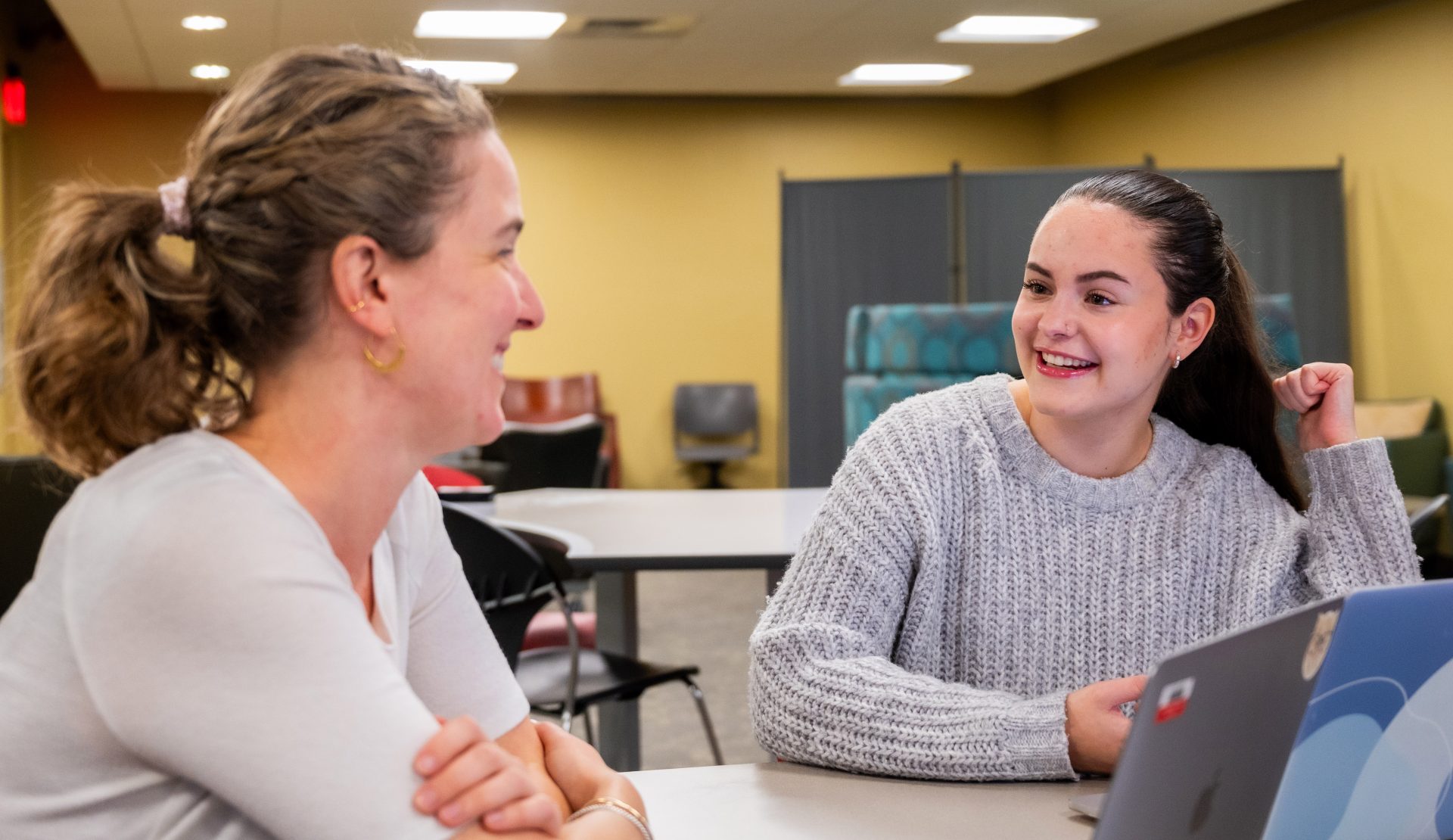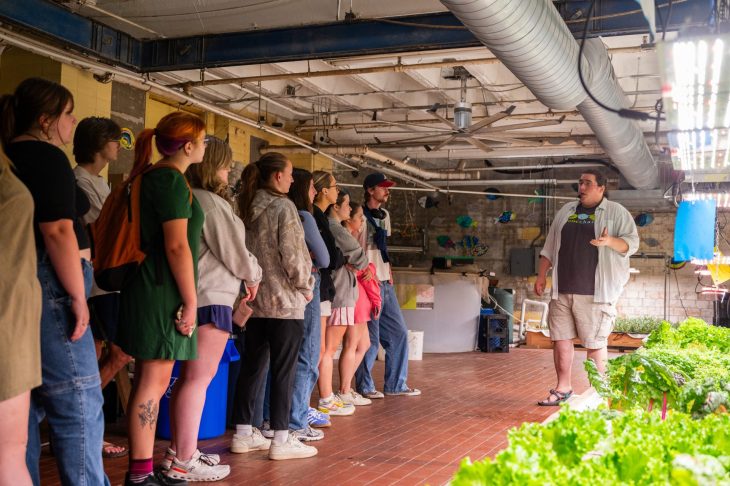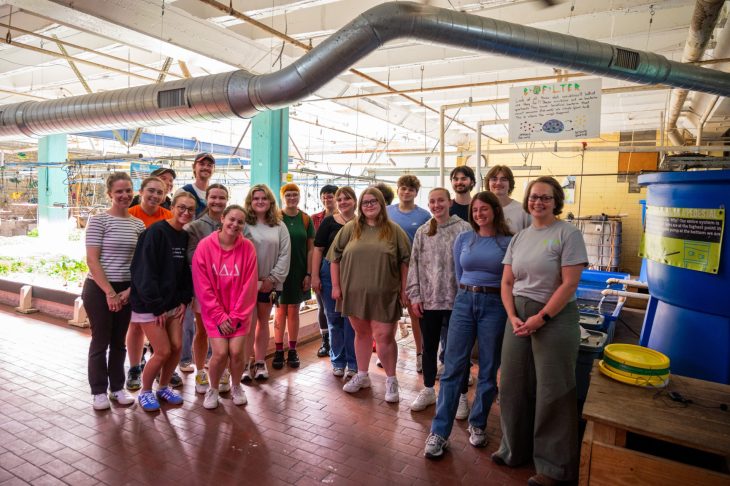
Rooted in Lexington: How Writing for and with Nonprofits Connects Students to Community and Purpose
by Laurie Preston, Stephen Russell and Joey Howard
Now in its 10th year, the course — co-created and taught by professors Kerri Hauman and Scott Whiddon — continues to bridge the gap between campus and community. It’s a course where students don’t just write for gradebooks — they write for Lexington.
A city becomes the classroom
From the first semester, the course has prioritized Lexington-based partnerships. Students work directly with local nonprofits such as Community Action Council (CAC), FoodChain, CivicLex, Habitat for Humanity, The Nest and the Lyric Theatre & Cultural Arts Center. They visit nonprofits in person, attend fundraising events and meet with nonprofit leaders to develop real communications materials — from social media content and videos to brochures and podcasts.
We don’t just send students out — we collaborate.
Kerri Hauman
“The ‘with’ in our course title is intentional,” Hauman says. “We don’t just send students out — we collaborate. We start planning six to seven months in advance with each nonprofit, making sure we add value and support their mission.”
For CAC Executive Director Melissa Tibbs, the class has become a valued partner. “Students bring a tone that’s fresh and authentic. We’ve used their blog posts, videos and even annual report stories in communications that have reached state reviewers and even Congress.”

Lexington as a living lab
Isa Slaughter ’25 recalls how the class changed how she saw the city. “We visited FoodChain, just a few blocks from campus, and saw this aquaponics farm growing food indoors in the middle of winter. That blew my mind — I had no idea this was in my neighborhood.”
Other students felt similarly transformed. Anne Elizabeth Forker ’24 shares, “We were out learning about local nonprofits, seeing their work firsthand. I’m already active in the Girl Scouts, but this class opened my eyes to how interconnected the nonprofit world really is in Lexington.”
The class structure invites the city into the curriculum — and the students into the city. Guest speakers, community tours, service projects and collaborative writing sessions provide a full-spectrum view of nonprofit work.
“It was cool to be in Lexington in this way,” says Slaughter. “We weren’t limited by physical distance. We’d hear from someone at Habitat for Humanity in the morning, and then drive to a coffee shop and see the project they’d described in action. It made everything real.”
Education with immediate impact
Through this city-integrated experience, students build portfolios and professional confidence. “They’re writing for real audiences with real deadlines,” says Hauman. “They may not even realize it, but they’re building a body of work that nonprofits can actually use.”
This class prepared me for the kind of work I do every day.
Laura Daley
From content for CAC’s Community Action Month to a podcast episode with the Lyric’s executive director, students see their work published and promoted. “It felt like work I’d do after graduation,” says Duffy. “And it was fulfilling to see it used in the real world.”
Alumna Laura Daley ’18, now working in nonprofit communications, reflects: “This class prepared me for the kind of work I do every day. It made me nimble — I do video, social media, press releases, you name it. This was the entry point.”
Shaping thoughtful leaders
Ultimately, this class exemplifies Transylvania’s core mission: cultivating thoughtful, engaged citizens. “Our students come in with big questions,” says Whiddon. “They leave with clearer ones — and sometimes, even a few solutions.”
He adds, “Lexington’s nonprofit community is addressing complex issues. Our students don’t shy away from these. They enter the conversation — respectfully, creatively and with a desire to serve.”
As Forker puts it: “We made a real impact. And hopefully, our work ripples out into the communities these organizations serve.”



